DRIVE (Day 1 - part 1)
We set out early. Fortunately the snow didn't cause us too many delays going over the I70 across the Rocky Mountains from Boulder to Grand Junction.


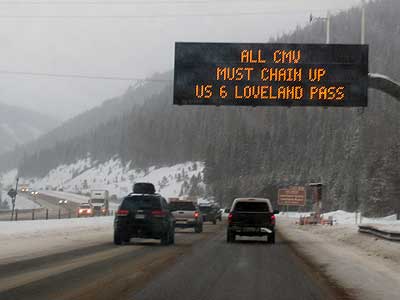
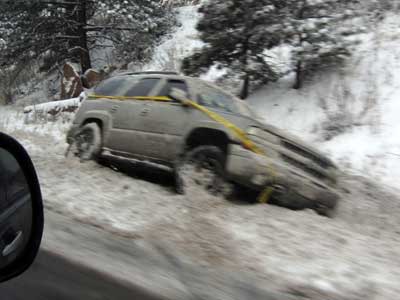

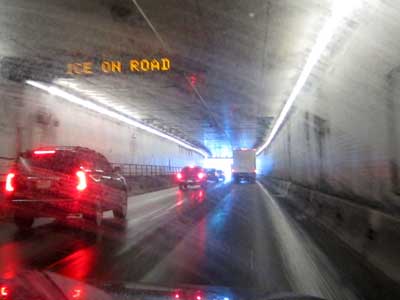
The Eisenhower Tunnel


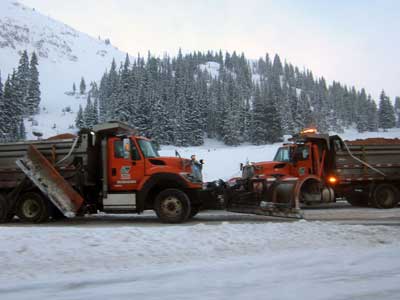

We stopped in Silverthorne to grab a bit of breakfast at the Sunshine Cafe.


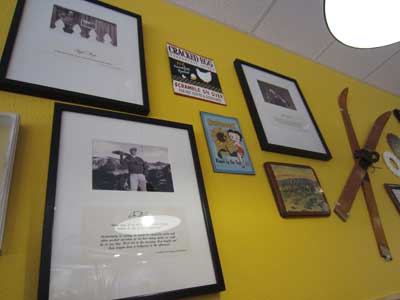
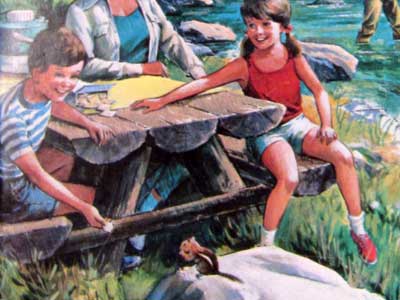
Mountaineering memorabilia covered the walls. .... An outdoors magazine from 1976 clearly encouraged the feeding of local wildlife, something that is considered a horrible sin today.


It was a bit ironic that the vegetarian omelet was named the Alferd Packer.

Alferd (sometimes spelled Alfred) Griner Packer (1842 - 1907) was just one of thousands who had 'gold fever' and sought to make his fortune.
In November 1873, an expedition of 20 men left Salt Lake City (Utah) for Breckenridge (Colorado), having received news of a massive strike discovered there. They met Packer a short ways out. They were apprehensive about letting him join since he had no money and minimal supplies. But he sold himself as an expert guide, which in reality he wasn't.
A majority of the party decided to wait until spring, but Packer and five other men attempted to travel 75 miles through the San Juan Mountains during the peak of winter, in spite of being warned not to by the local Utes and Chief Ouray. They didn't want to risk missing out on the mining riches. Because of Packer's inexperience, they became lost. In February, they had run out of food and were trapped in the wilderness in heavy snows.
Two and a half months later, Packer stumbled out of the mountains alone. At first he claimed the other men had abandoned him to survive on his own, with almost no supplies. But he looked too well-fed and also had FAR more money than he should have had (including a rifle, knife and wallets from the other men). Plus, he had been their guide... the only one who supposdely knew the way. He drank heavily for the next few days... and each time he had a different story of what happened. People became suspicious. During the proceedings, two Utes rushing in, holding strips of dried human flesh they had found.
Packer then told a new story. He said once when he had left to gather firewood, he returned to find that the other men had killed one of the men, so he joined them in eating him to survive. They continued on. Several days later, the same thing happened to another man. Then a third, and a fourth, until it came down to just Packer and a guy named Bell. Eventually Bell attacked him and Packard killed him in self-defense. Then, of course, ate him.
A search party was organized to find the bodies. Of course, Packer couldn't find any of the areas again, but ended up attacking one of the other men with a knife. He was arrested and jailed. His story changed again to how they had all been lost in a blizzard and had agreed to eat each other along the way but only if a person died naturally (freezing, exhaustion, starvation, etc).
A bit later, once the snow had melted, all five bodies were discovered together... only two miles away from a town. It appeared as if extreme violence had befallen them. They had received blows to the head (most likely from a hatchet), probably killed in their sleep. Their bodies had been flayed; bones had been broken; and they were in varying states of decay. Only the choicest muscle and flesh had been removed (no organs or bone marrow, such as scavenging animals would eat). The carcass of a deer was even found near the campsite, indicating wildlife was not as scarce as Packer had claimed.
This evidence clearly contradicted Packer's stories, where the bodies had been scattered across miles. There was enough meat left on the first bodies to have sustained the others for a long time. Nearby was a crude shelter, indicating Packer had stayed there for months. There was even evidence the men had died before the supplies had run out, that Packer killed them to rob them, then got accidentally snowed in.
When the search party returned, Packer had escaped. He moved to Wyoming, changed his name, and evaded capture for nine years until he was recognized by one of the men from the original party that had left Salt Lake City.
Now Packer claimed that Bell had gone insane and killed them all at once. But after all his stories, no one believed him. They ironically understood the cannibalism part (due to the tragedy of the Donner party in 1846-47), but whether it was his incompetence as a guide or premeditate murder, that was the question.
At first, the verdict was that he should be hanged, but a second trail reduced the sentence to 40 years. He was released in eighteen. He lived and worked in Denver until his death. It's even rumored he'd become a vegetarian in his final years.
In 1989, the five bodies were exhumed and reexamined. There was sufficient evidence that Packer had indeed murdered them, most likely for their belongings than for the intention of eating them. Along with blunt force trauma to the skulls, three of the men had hack marks in the bones of their forearms, suggesting they had held up their arms to shield themselves from an attack... including Bell, whom Packard claimed he shot in self-defense. Fabric fibers in some of the skulls suggested that their heads had been covered with a blanket before the strike. All five skeletons had post-mortem injuries from butchering and hacking, contradicting Packer's claims of "minimal" cannibalism.
In 2001, as the result of improved technology in the form of an electron microscope, lead fragments in the soil beneath Bell's remains were matched with the bullets from Packer's pistol. So, Packard probably did shot Bell. But was it self defense or to debilitate him before killing him with a hatchet? This question may never be answered. All that is known for certain is that Packard led these men to their deaths by lying about his skills and ignoring winter warnings... and yet he himself survived.
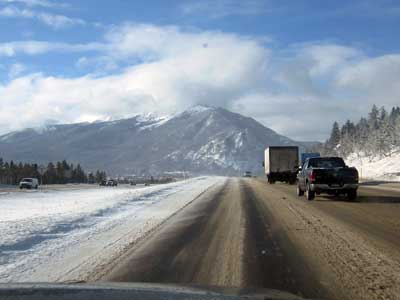









There was a slight backup from a truck that had slid off the road. But fortunately there was no major damage and a tow truck was able to pull it from the lanes.


Beautiful Glenwood Canyon



In Grand Junction, we stopped at Edgewater Brewery (recently acquired by Kannah Creek Brewing Company).


We continued on... leaving Colorado and entering Utah.

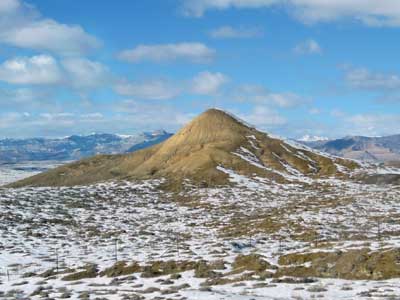
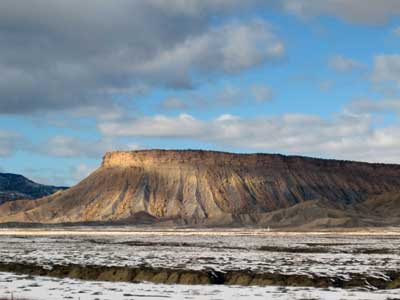



Outside Green River is an odd statue called Golden Ratio. It's a 44-foot--tall set of 53 giant concrete blocks built by Australian artist Andrew Roger. It's based on the mathematical principal of the same name.
return • continue

